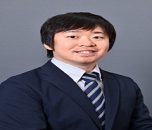13th Annual Conference on Polymer Science and Engineering
Tokyo, Japan

Takumitsu Kida
Japan Advanced Institute of Science and Technology, Asahidai 1-1, Nomi 923-1292, Japan
Title: Raman Spectroscopic Study of Microscopic Deformation Behavior of Semi-Crystalline Polymeric Materials under Uniaxial Stretching
Biography
Biography: Takumitsu Kida
Abstract
Semi-crystalline polymers such as polyethylene (PE) exhibit a lamellar alternating structure composed of lamellar crystalline and amorphous layers with 10 to 20 nm thickness. The lamellar alternating structure is fragmented into small crystallites and reorganized under a uniaxial stretching process, which results in the plastic deformation of semi-crystalline polymers with necking deformation. We developed a rheo-Raman spectroscopic system combined with Raman spectroscopy and a tensile tester to elucidate the microscopic mechanism of the plastic deformation. By using the rheo-Raman spectroscopic system, the molecular orientation and the microscopic load sharing of the molecular chains during the uniaxial stretching can be evaluated in situ. The molecular chains in the crystalline structure are oriented in the tilted angle to the stretching direction during the necking process. The oblique orientation is caused by the excluded volume effect of the rigid and bulky lamellar crystalline structure. Moreover, the compression load is applied perpendicular to the molecular chain axis of the crystalline chains in the necking deformation. Considering that the compression stress is applied in the lateral direction of the specimen during the necking deformation due to the Poisson’s effect, the compression load applied on the crystalline chains is owing to the lateral shrink of the specimen. Beyond the necking deformation, the crystalline chains are simply oriented into the stretching direction and the stretching load is applied on the molecular chains. These results strongly indicate that the reorientation of the lamellar crystalline structure in the necking process dominates the plastic deformation of the semi-crystalline polymeric materials.
